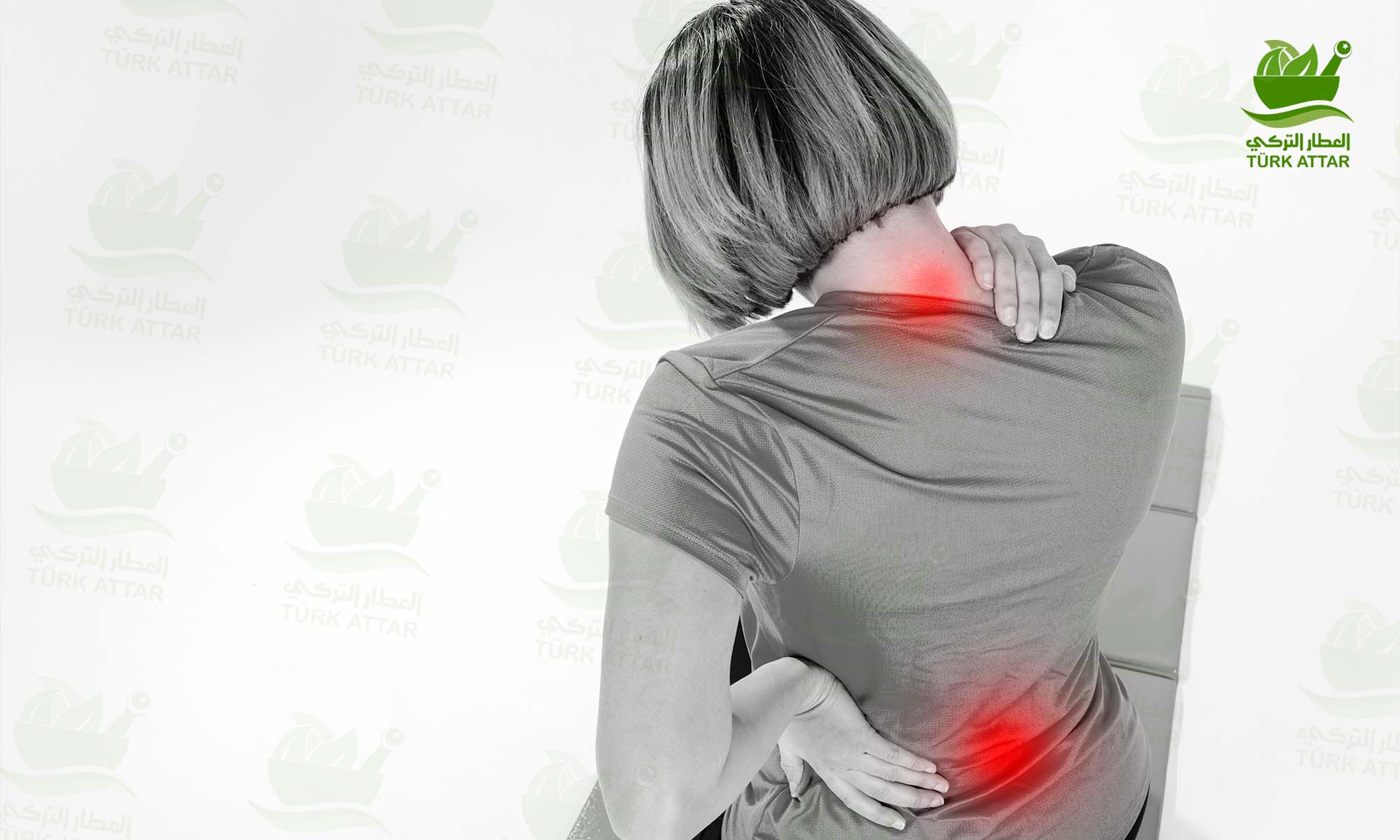
Ankylosing spondylitis, also humpback, as it is popularly known, is an inflammatory disease that can cause some small bones such as vertebrae to fuse with each other over time as a result of this fusion becomes the column The spine is less flexible and the normal position of the individual may become leaning forward. If the ribs are affected by the inflammation that leads to ankylosing spondylitis, it can be very difficult for a person to breathe deeply.
Ankylosing Spondylitis
Spondylitis is more common in men than in women. Signs and symptoms of the disease usually begin in early adulthood, and inflammation can also occur in other parts of an individual's body, often in the eyes. Unfortunately, there is no definitive and permanent cure for ankylosing spondylitis, however there are a number of treatments available to reduce symptoms and slow the progression of the disease.
the reasons:
What causes ankylosing spondylitis?
A specific known cause of ankylosing spondylitis has not yet been identified, but doctors believe that several genetic factors play a role in the disease. In particular, individuals with a gene called HLA-B27 have a significantly increased risk of developing ankylosing spondylitis, although only a fraction of individuals with this gene develop this condition and this suggests that various environmental factors play a role in the activation mechanism.
Men are more likely than women to develop ankylosing spondylitis. In addition, the onset of the disease usually occurs in late adolescence or early adulthood.
What complications can occur with ankylosing spondylitis?
In severe cases of ankylosing spondylitis, new bone tissue is formed as part of the body's attempt to heal damaged bony structures. This newly emerged bone tissue gradually fills the space between the vertebrae and eventually joins the vertebral segments in a way that hinders normal movement and these parts of the individual's spine become stiff It loses its elasticity. Fusion can also stiffen an individual's rib cage, limiting lung capacity and function.
Uveitis is one of the most common complications of ankylosing spondylitis and can cause a sudden onset, rapid eye pain, sensitivity to strong light, and sudden blurred vision. Individuals who exhibit these symptoms should see an ophthalmologist as soon as possible.
In some cases, individuals' bones become thinner in the early stages of ankylosing spondylitis and weakened vertebrae fracture and can worsen the individual's tilted position. This fragmentation is called a compression fracture. Vertebral fractures that do occur can cause significant damage by putting pressure on the spinal cord and the nerves that run through the spine.
Ankylosing spondylitis can cause problems with the aorta, the largest artery in the human body, and an inflamed aorta may tend to enlarge enough to distort the shape and function of the aortic valve in the heart.
Symptoms:
What are the symptoms of ankylosing spondylitis?
Early signs and symptoms of ankylosing spondylitis include pain and stiffness around the lower back and hips, especially in the morning and after periods of inactivity such as prolonged sitting on the couch. Neck pain and fatigue are also common symptoms. Signs and symptoms of the disease may worsen, worsen, abate, or stop completely and occur at irregular intervals over time.
The most affected areas of the body in cases of ankylosing spondylitis (humpback) is the joint between the base of the spine and the pelvis, the vertebrae in the lower back, the places where tendons and ligaments attach to the bones, especially in the spine, but sometimes the effect is along the back of the heel where they stick Bone, sternum, and cartilage tissue between the sternum, ribs, hip and shoulder joints.
It may be necessary to seek medical attention if the individual has lower back or hip pain that usually begins very mildly, especially in the morning, or may wake you up in the second half of the night.
Another symptom of this condition is that this pain decreases with exercise and gets worse with rest. Individuals who develop painful eye redness, extreme sensitivity to light or blurred vision are advised to consult an eye specialist immediately.
Diagnostic methods:
How is ankylosing spondylitis diagnosed?
Doctors first perform a physical exam to diagnose ankylosing spondylitis. During a physical exam, the doctor may ask the individual to bend in different directions to test the range of motion in the individual's spine. Additionally, the individual may attempt to reproduce pain by applying pressure to certain parts of the pelvis or by placing their legs in a certain position, the doctor may also ask the individual to take deep breaths to see if the individual is having difficulty inflating their chest while breathing.
Imaging tests can help doctors diagnose ankylosing spondylitis. X-rays allow a doctor to check for changes in an individual's joints and bones. However, the visible signs of ankylosing spondylitis may not be obvious enough to be noticed on X-ray film in the early stages of the disease.
An MRI or MRI uses radio waves and a strong magnetic field to produce more detailed images of bones and soft tissues, although MRI scans are more expensive than X-rays but can reveal evidence of ankylosing spondylitis in its early stages and allow inhibition therapy to begin in early time.
There is no disease-specific laboratory test that can be used to identify ankylosing spondylitis. Although some blood tests can check for signs of inflammation, they alone are not sufficient evidence to diagnose ankylosing spondylitis, as inflammation is caused by many different health conditions. An individual can be tested for the HLA-B27 gene, but most people who have this gene do not develop ankylosing spondylitis. However, individuals who do not have this gene can also develop ankylosing spondylitis.
Methods of Treatment:
How is ankylosing spondylitis treated?
The goal of ankylosing spondylitis treatment is primarily to relieve pain and stiffness, which are among the symptoms of the disease, and to prevent or delay the development of various complications related to the disease, especially spinal deformity. Treatment of ankylosing spondylitis is most successful before the disease causes irreversible damage to an individual's joints.
Non-steroidal anti-inflammatory drugs are commonly used by medical professionals in the treatment of ankylosing spondylitis. These types of medications can relieve an individual's inflammation, pain, and stiffness.
Some blocker medications help relieve pain, stiffness, and painful or swollen joints. Under normal circumstances, drugs are injected under the skin or given to the individual intravenously.
These medications should be used under the supervision of a physician. Some medications reactivate pre-existing, untreated tuberculosis and may make an individual more susceptible to various infections. In addition, these medications have side effects such as causing gastrointestinal bleeding.
Some medications have been approved for psoriatic arthritis and rheumatoid arthritis, which are other types of infectious diseases. Under normal circumstances, research into their effectiveness for people with ankylosing spondylitis is ongoing.
Along with drug therapy, physical therapy is an important part of treatment and can provide a range of benefits ranging from relieving an individual's pain to restoring lost strength and flexibility or reducing loss. A physical therapist can design exercises tailored to an individual's specific needs. Exercises to improve an individual's range of motion and stretch can help maintain flexibility and good posture in joints. Proper sleeping and walking positions, and abdominal and back exercises performed during the day can help an individual maintain an upright posture.
Most people with ankylosing spondylitis do not require surgery. However, in individuals who have severe pain, joint damage, or who have had enough damage to require a hip replacement, a doctor may recommend surgery.
Lifestyle changes and home care for ankylosing spondylitis:
There are many steps people with ankylosing spondylitis can take to help their condition in addition to visiting their doctor regularly and taking their medication regularly as prescribed.
Most important is to stay active Regular exercise can help relieve pain, maintain flexibility and improve posture.
Heat packs applied to stiff joints and tense muscles can relieve pain and stiffness. Warm baths and showers with heating pads or hot towels can also help. In addition, ice packs applied to sore areas can help reduce swelling.
It is important not to smoke. Smokers should quit as soon as possible. Smoking is generally harmful to health but causes additional problems in people with ankylosing spondylitis that interferes with clean breathing.
Correct standing is important. Standing in front of a mirror and practicing the correct posture may help the individual not to develop some of the problems and complications associated with ankylosing spondylitis.

2 Comment(s)
1
1
1
1
1
Leave a Comment